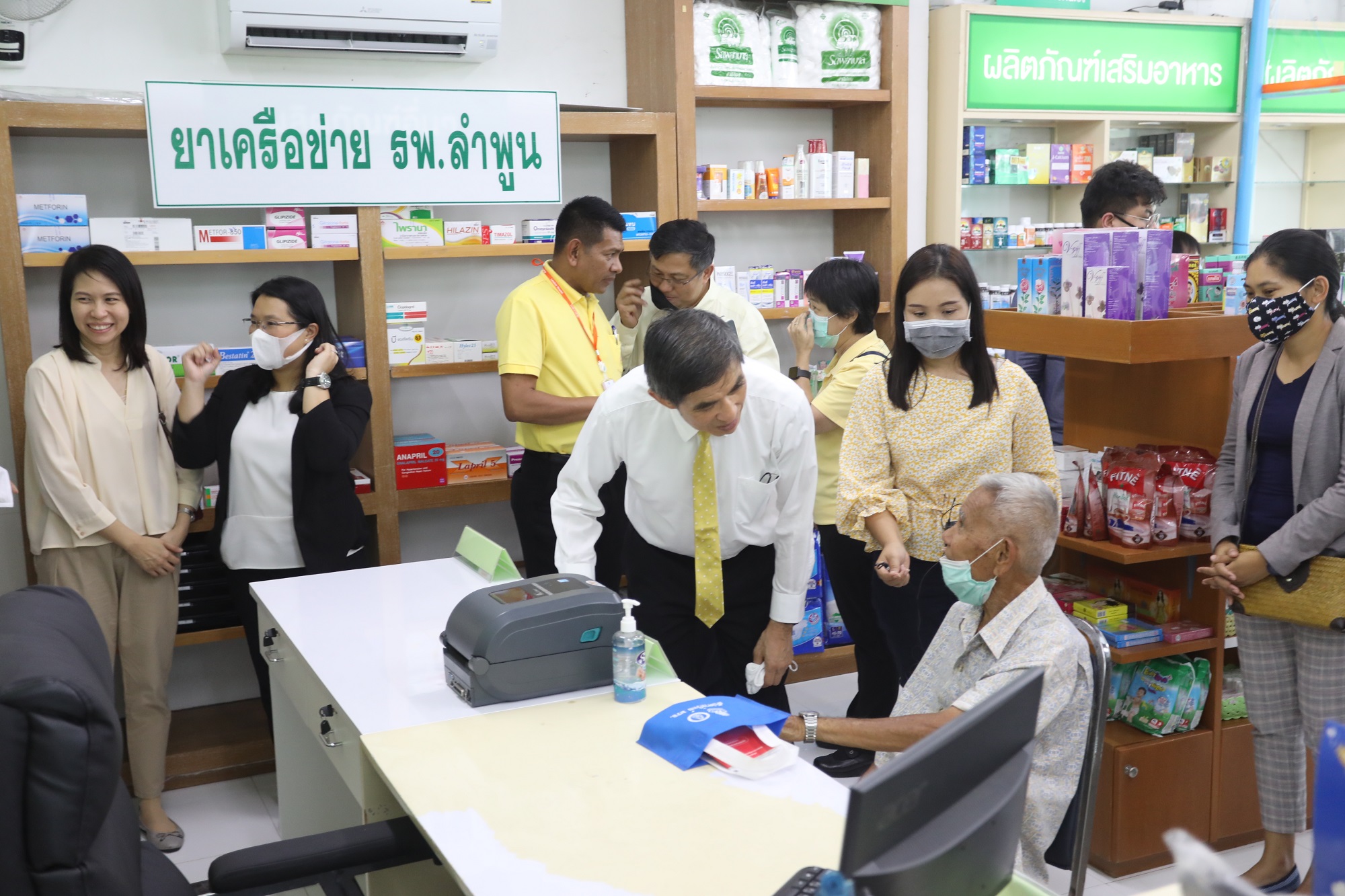
- Home
- DescriptionNews
More patients prefer picking up medication at pharmacies near them

More patients prefer picking up medication at pharmacies near them
Starting out last year, Rap Ya Klai Ban (Get your medicines near your home) project is gaining popularity. It is heading to a new stage, in which more privately-owned pharmacies will be contracted to fully manage a pharmaceutical stock specifically for prescriptions given to patients under the universal coverage (UCS) scheme.
In the first stage of the project’s development, a number of hospitals under the UHC simply delivered medication to their patients through local pharmacies joining this initiative, while in the second stage of it these hospitals began storing medication at the contracted pharmacies but still handled their UHC stocks for the pharmacies. Pharmacists at these pharmacies, meanwhile, were permitted to distribute the drugs to patients with a prescription given by their doctors under the UHC.
“Aside from improving patients’ convenience, this project also proved effective in reducing overcrowding in the hospital,” said Dr Sakchai Kanjanawatana, Secretary-General of the National Health Security Office (NHSO).
Time-saving initiative
An assessment carried out by Health Intervention and Technology Assessment Program (HITAP) ten months after the project was official launched on Oct 1, last year, showed the project helped cut by 22% of the time normally spent by patients in travelling to the hospital and waiting in a long queue for their medication and reduce by between 10% and 20% in hospital overcrowding.
As of Aug 1, 2020, a total of 130 hospitals under the UHC and 1,033 pharmacies have been taking part in this new medication dispensing programme, said Dr Jakkrit Ngowsiri, Deputy Secretary-General of the NHSO.
Initially, only 50 hospitals and 500 were expected to participate in the programme, he said, adding that close to 20,000 patients were receiving medication under this programme.
The NHSO aims to increase the number of patients participating in the programme to 36,450 in 2021, he said.
A vast majority of the hospitals joining the programme are general hospitals (37.69%), followed by hospitals that are medical centres (25.38%), he said.
Most of these hospitals (80.77%), however, still prefer the first model of medication dispensing, in which they have the medication sent to the contracted pharmacies first and then ask their patients to pick their medicines up at these pharmacies, he said.
Convenience of patients
A vast majority of patients joining this programme (7,894) are the people aged between 61 and 75, followed 6,280 patients who are between 46 and 60 years old, while only 2,563 patients who are older than 75 years old and 1,644 patients aged between 31 and 45 are taking part in the same programme, he said.
Most of these patients are receiving their medicines distributed through pharmacies for one or more chronic diseases including high blood pressure, diabetes and other related health problems, while 892 patients are receiving medication for mental illnesses, he said.
Chiangrai Prachanukroh Hosptial in Chiang Rai has recorded the highest number of 3,515 patients taking part in the medication distribution programme, followed Hatyai Hospital in Songkla (1,805) and Phrachomklao Hospital in Phetchaburi (1,128), Lamphun Hospital in Lam Phun (963) and Nakhonpathom Hospital in Nakhon Pathom (859), he said.
Lamphun Hospital’s experience
Dr Phongsak Sophon, the director of Lamphun Hospital, said the average waiting time per patient at the hospital has been shortened by 37% from about 32 minutes to only 19 minutes after implementing the medication dispensing programme.
Calling the programme telepharmacy, the doctor said it was part of the hospital’s telemedicine brought in place to promote social distancing to prevent the spread of the new coronavirus that causes Covid-19.
“By word of mouth, more and more patients impressed by the service keep recommending peers to take part in this programme…We are now moving on to Model 3,” said the doctor, referring to contracting pharmacies to fully manage a drug stock for the hospitals’ UHC patients who are receiving medicines from them instead of the pharmaceutical department of these hospitals.
Move on to next step
In a transition to the Phase 3 of the project, beginning on Oct 1, 2020, the Government Pharmaceutical Organisaton (GPO) now is handling drug purchases and distributing them to the pharmacies under this programme through its vendor managed inventory (VMI) system, said Anunchai Assawamakin, an assistant to Public Health Minister Anutin Charnvirakul.
Those pharmacies that are ready to handle the drug stock for the UHC on their own will soon be allowed to do so, said Mr Anunchai who is a pharmacist.
Three core challenges facing the project were identified in a recent evaluation of it, namely low coverage, a subsidy provided under this project being far below the actual costs of it and a lack of sophisticated IT systems to support data sharing between hospitals and pharmacies, said Dr Suwit Wibulpolprasert, a member of the NHSO's board.
He recommended expanding the telepharmacy programme to cover 50% of the UCS’s hospitals next year.

